Contest Celebrates the 10th Anniversary of USTS Texas Clipper Reefing
Off the coast of South Padre, on the bottom of the Gulf of Mexico, lies a ship on its side. The Texas Clipper, which had served as the training ship for cadets at the Texas A&M Maritime Academy in Galveston for 30 years, was sunk on November 7, 2007 as part of the Texas Parks and Wildlife Department (TPWD) Artificial Reef Program’s Ships-to-Reefs Project.
To celebrate the 10th anniversary of the sinking, TPWD is running the Challenge Coin Dive Contest. “The purpose of this contest is to promote the ship as a diving attraction for novice and technical divers and educate people on its history,” says Dale Shively, Artificial Reef Program Leader at TPWD.
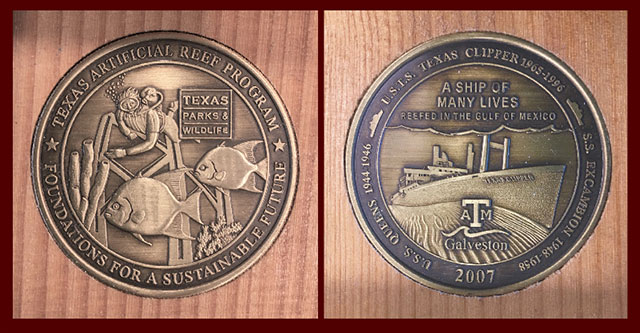
The challenge is to complete as many dives on the ship as possible from now until November 7, 2018. Divers who report their trips and provide TPWD with feedback on their diving experience at the reef will receive a bronze coin (2 dives) and silver coin (4 dives). They will also be entered into a raffle to receive a commemorative silver/gold coin at the end of the contest featuring the USTS Texas Clipper. All coins are limited and subject to availability.
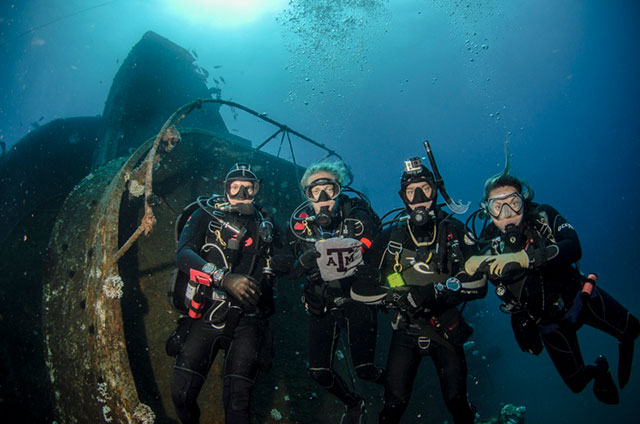
TAMUG scientific divers explore the wreck of the USTS Clipper during a Texas Parks and Wildlife Department Artificial Reef Program monitoring trip. From left to right: Jake Emmert ’16 and Rachel Susen ’15 (both now at Moody Gardens Aquarium), and Tom TinHan and Jacque Cresswell (both current Ph.D. students).
Dr. Stephen Curley, Regents Professor of English at TAMUG, wrote the authoritative history of the ship in the book The Ship that Would Not Die. Built as an attack transport in 1944 and seeing service during World War II as the USS Queens, the ship would later be repurposed as the cruise liner SS Excambion. In 1965, the ship was lent to the Texas Maritime Academy (later Texas A&M Maritime Academy) and renamed USTS Texas Clipper.
“Finally,” wrote Dr. Curley, “after 30 consecutive summer training cruises, the sailing days of the 50-year-old ship were over.” She made her last training cruise in 1994, and in 1996 was taken to reserve moorings in a U.S. Maritime Administration (MARAD) harbor in Beaumont, Texas.
With the passing of federal and Texas artificial reef statutes in the 1980s and 1990s, and the creation of the TPWD Artificial Reef Program in 1990, the Clipper was considered for a project that had the potential to provide and protect marine habitats along the coast.
The Texas Clipper Ship Reef Project began in 1997, with the USTS Texas Clipper having been chosen in large part due to its name and service.
“I made several trips to tour the ship with other TPWD staff to plan its cleanup and reefing,” says Shively.
However, the ship had a multitude of contaminants, including polychlorinated biphenyls (PCBs), a man-made toxic chemical commercially produced at the time. The project was forcibly delayed for several years while government agencies finalized procedures for dealing with these chemicals.
Unfortunately, in 2006, the ship sank to the bottom of the harbor due to hull fatigue. With MARAD wanting to scrap the project entirely, Shively stepped in on behalf of the Texas Clipper. He engaged the help of Texas legislators, who in turn advocated repairs and the transfer of the ship to TPWD.
Finally, the Texas Clipper was deemed ready and towed to Brownsville, Texas where final preparations were made. She was then towed into position seventeen miles off the coast of South Padre Island.
During the controlled sinking a strong wind rose from the starboard side, causing water inside the ship to disperse unevenly. The following day, Shively and other divers verified that the Texas Clipper was laying on her port side.
While not sinking entirely according to plan, Shively notes that “the ship has become known for its technical diving challenges and is a haven for more advanced divers,” though novice divers can still explore the exterior.
And divers aren’t the only ones drawn to the ship. “There is a tremendous amount of marine life living on it,” says Shively.
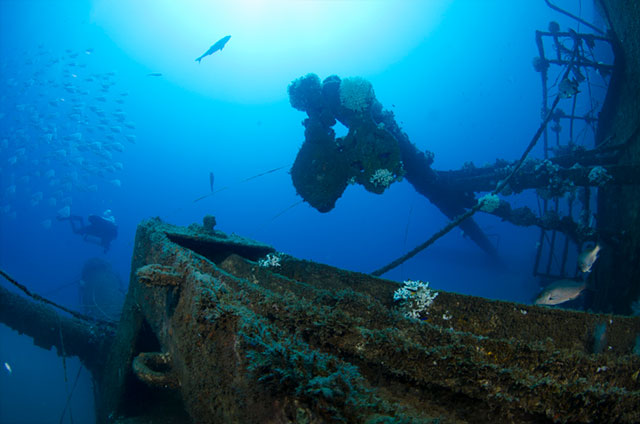
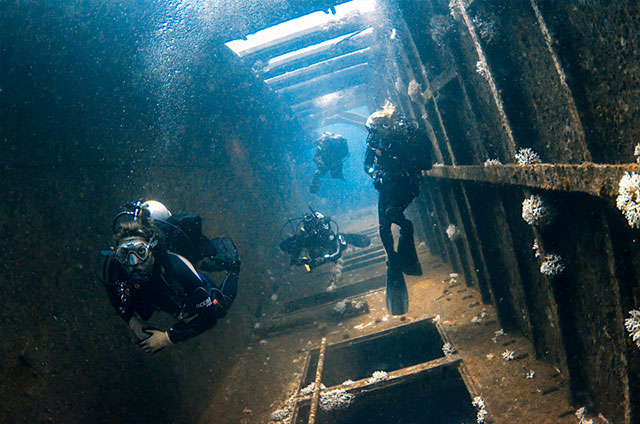
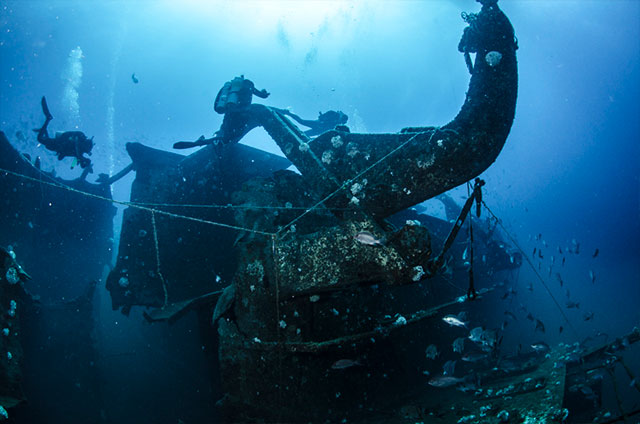
TAMUG scientific divers explore the wreck of the USTS Clipper during a Texas Parks and Wildlife Department Artificial Reef Program monitoring trip. Photo Credit: TPWD.
###
For full rules and details regarding the contest, visit the Texas Parks and Wildlife Department’s Artificial Reef Facebook page.
Special thanks to Dale Shively, Artificial Reef Program Leader, and Allison Baldwin, Artificial Reef Program Technician, of the Texas Parks and Wildlife Department for their timely assistance in gathering information and supporting documents for this piece, and for all the work they do for the State of Texas.